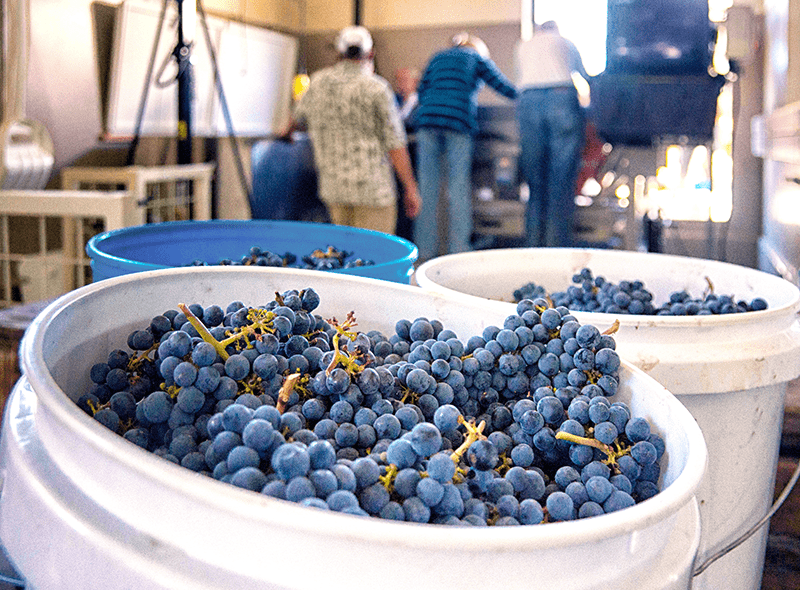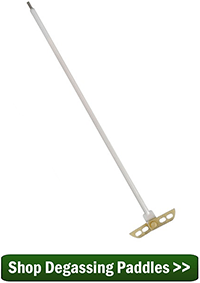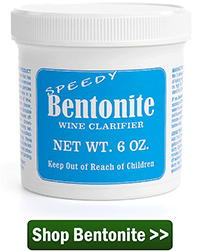 I made 36 gallons of wine last year, a Alicante and Zinfandel mix. This was my first attempt at winemaking. I followed the instructions from a winemaking book. I racked the wine three times put in the proper extra ingredients then bottled it over the correct period of time. The wine turned out terrible. There is still sediment and it must have not fermented properly because the wine still has bubbles. Is there anything that I can do? I’m thinking of emptying all the bottles into my 35 gallon container. Maybe letting it set and rack it again. I don’t know what to do because it really doesn’t taste good at all. Any suggestions would be really appreciated. Even throw it all out!
I made 36 gallons of wine last year, a Alicante and Zinfandel mix. This was my first attempt at winemaking. I followed the instructions from a winemaking book. I racked the wine three times put in the proper extra ingredients then bottled it over the correct period of time. The wine turned out terrible. There is still sediment and it must have not fermented properly because the wine still has bubbles. Is there anything that I can do? I’m thinking of emptying all the bottles into my 35 gallon container. Maybe letting it set and rack it again. I don’t know what to do because it really doesn’t taste good at all. Any suggestions would be really appreciated. Even throw it all out!
Thanks Frank
Name: Frank S.
State: Colorado
—–
Hello Frank,
Most of the time when I hear about bubbles and sediment in the wine it’s because the wine is still fermenting in the bottle. The fermentation causes CO2 (carbonation) to form in the wine and sediment to drop out (dead yeast cells). But, in this cause I am also concerned about the wine having spoiled, as well.
 Spoilage is best determined by the wine’s smell. Does it have a fingernail polish or paint thinner odor? Does it have a cooked cabbage or rotten food odor? Do you smell something like rubber or band-aids in the wine? Any of these would indicate potential spoilage. The only smell that would be acceptable, other than the fresh bouquet of the wine, would be a sulfur or yeasty smell. This would be expected from a freshly fermented wine and will lessen with time.
Spoilage is best determined by the wine’s smell. Does it have a fingernail polish or paint thinner odor? Does it have a cooked cabbage or rotten food odor? Do you smell something like rubber or band-aids in the wine? Any of these would indicate potential spoilage. The only smell that would be acceptable, other than the fresh bouquet of the wine, would be a sulfur or yeasty smell. This would be expected from a freshly fermented wine and will lessen with time.
If it seems that the wine has spoiled, there is little you can do about it other than to discard it. There is nothing you can do to reverse such a wine fault. But, if the wine is not giving off any of these off-odors, then there is hope.
From you description you gave of bubbles and sediment in the wine, it may be very likely that your wine is still slightly fermenting or has fermented in the bottles. If this is the case – then just as you have suggested – decanting all the bottles of wine back into a fermenter would be the first plan of action. Try not to splash the wine anymore than necessary. This can cause the wine to oxidize.
The whole idea behind putting the wine back into a fermenter is to allow it time to finish fermenting, if necessary, and/or to clear up. Take a hydrometer reading of the wine. If the Specific Gravity is above .998, then some fermentation time is needed.
Once any fermentation is done, you will want to degas the wine. This is done simply by agitating the wine so as to release all the CO2 gas from the wine. You can use a tool call degassing paddle to help degas your wine as well.
The wine will need some time to clear. This is something that can only begin to happen after any fermenting has completed. A fining agent such as bentonite may be added to help speed up the settling process. Being patient with this step will be in the wines favor. Just keep it under air-lock and give it plenty of time, even months. There is nothing wrong with bulk aging a wine. If you do plan on waiting more than a couple of weeks to bottle the wine, you should add a half-dose of potassium metabisulfite to the wine. (1 teaspoon to every 32 gallons).
When the wine is ready to be bottled, you will want to siphon it off the sediment, first. You will also want to add another full-dose of potassium metabisulfite right before bottling. 
Happy Wine Making
Ed Kraus
———————————–
Ed Kraus is a 3rd generation home brewer/winemaker and has been an owner of E. C. Kraus since 1999. He has been helping individuals make better wine and beer for over 25 years.

I have had problems with some of my red wine kits giving a very low level of what I call Spritz – it is very low but takes away from the taste. My response is to do as you state above – decant the bottles back into a carboy, degas and then rebottle – each time this has been very successful. However, this is a big nuisance!! I check my SG at the end of the fermentation and never go tot he next stage until the SG is lower than or equal to 0.996 (I only sometimes get down to 0.995 or 0.994). So, I know I have reached the end of the fermentation. Once I have put the clarification chemicals into the wine I let the temperature drop to around 64F. I have found that if I reheat the wine to 75F and add 1/4tsp of KSO3 and stir just before bottling I have much lower result of having spritz in my wine after say 6 months to 1 year, than if I do everything at 64F. Does this result make sense to you? It seems odd that a temp difference of only 10F at that stage would make any difference, but it seems to. Any insights, comments would be most welcome.
Michael, it sounds to me like you just need to thoroughly degas your wine before you bottle. The following article will discuss this further.
Degassing Your Wine
http://www.eckraus.com/blog/degassing-homemade-wine
the best way 4 gallons of 100% grape juice in a 5 gallon bucket 12 cups of sugar and 1 packet of wine yeast mix up and wait till your airlock stops bubbling then rack in clean bucket wait to weeks then rack then to more weeks then bottle if clear if not wait to moor weeks i make it all the time
I have a question about clearing wine. I have Rhubarb wine that does not want to clear. I racked it again had very little sediment. I degassed it vigerously with the drill and paddle. It did seem to disapiate more co2 . Can I use more kieselsol or bentonite to help clear it ? Is there any harm in using more of these agents a second time ? or Will they just precipitate out? Appreciate any of your advice. Thanks
Knute, There may be times you have to add more than one clarifier to get your wine to clear. I would recommend using Speedy Bentonite. If you wine isn’t completely clear after using Speedy Bentonite. We recommend following up Hot Mix Sparkolloid.
Speedy Bentonite
http://www.eckraus.com/6-oz-speedy-bentonite.html
Hot Mix Sparkolloid
http://www.eckraus.com/2-oz-hot-mix-sparkolloid.html
Using Fining To Improve Your Wine
http://www.eckraus.com/wine-making-finings
I have made a batch of haskap wine with invert sugar. Is that a bad thing or should I just have used regular sugar? It is still fermenting in the primary for over 3 weeks now but am wondering if regular sugar would have been better? Thanks in advance!
Actually, invert sugar is slighter easier to ferment than regular sugar, so no problems at all.